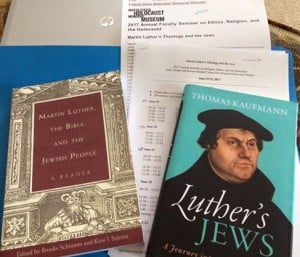The stabbing of British soldier Lee Rigby in the middle of the afternoon on a London street last week is a terrible horrible no good very bad story. To me, one aspect of the story is striking:
They [the attackers] dragged the almost beheaded body of their victim into the road and walked up and down the street next to the body for 20 minutes, waiting for police to arrive.
At least two women were seen sobbing over the man’s body, trying to comfort him even though he was probably dead.
 More widely reported and praised has been the actions of Ingrid Loyau-Kennett:
More widely reported and praised has been the actions of Ingrid Loyau-Kennett:
Cub Scout leader Ingrid Loyau-Kennett, 48, then jumped off her bus when she saw the dead soldier in the road, assuming it had been a car accident.
After checking his pulse the mother-of-two spoke to one of the killers, pleading with him to hand over his weapons to her.
The video and still pictures of her listening to the bloody-handed knife wielding attacker are chilling. Listening to her describe why she did it and what she was thinking is even more powerful:
Yet rather than back off, Loyau-Kennett chose to talk to the man. She asked him the reason for his actions and tried to distract him from the onlookers who had begun to gather nearby.
“I didn’t really feel anything,” she told the Guardian. “I was not scared because he was not drunk; he was not on drugs. I could speak to him and he wanted to speak, and that’s what we did.”
He wanted to speak. She listened.
One of the defining features of terrorism is that it is a means of communication. It is meant to terrify, yes, hence the name, and it is a dramatized method for the aggrieved to make a public statement. It’s how they get people to pay attention.
He wanted to speak. She listened.
An NBC News report also contained the reference to the two women who stayed with the young soldier’s body as a crowd gathered and the police eventually arrived to apprehend the suspects.
 I couldn’t help but think of the accounts of the crucifixion of Jesus when the only ones who stayed behind to witness his bloody torture and death were the women:
I couldn’t help but think of the accounts of the crucifixion of Jesus when the only ones who stayed behind to witness his bloody torture and death were the women:
“There were also women looking on from a distance; among them were Mary Magdalene, and Mary the mother of James the younger and of Joses, and Salome. These used to follow him and provided for him when he was in Galilee; and there were many other women who had come up with him to Jerusalem.” (Mark 15:40-41)
And, the ones who tended to the dead body in that story were the women:
“When the sabbath was over, Mary Magdalene, and Mary the mother of James, and Salome bought spices, so that they might go and anoint him.” (Mark 16:1)
Mr. Rogers may have said that when terrible things happen we should look for the helpers.
Perhaps we should also look for the women.












